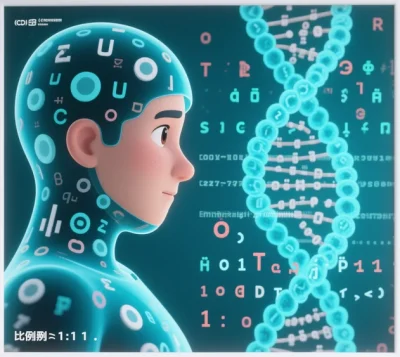
CodonBio: Codon-Driven Biological Innovation (Technology Landscape Analysis)
1. Core Definition and Technical Paradigm
CodonBio (Codon-Driven Biological Innovation) refers to cutting-edge technologies that systematically design and optimize genetic codons to reprogram biological systems. This paradigm shifts biology from “deciphering life’s language” to “programming life’s logic” by transcending natural evolutionary constraints on codon usage.
Core Principles:
- Codon Redundancy Engineering: Leverage synonymous codon translation efficiency differences to regulate gene expression (e.g., codon-optimized mRNA vaccines enhance antigen protein yield).
- Non-Canonical Amino Acid Integration: Expand the genetic code (21st amino acid technology) to incorporate synthetic amino acids like selenocysteine and pyrrolysine, enabling novel biological functions.
- Orthogonal Translation Systems: Design codon-tRNA pairs independent of host systems for interference-free parallel gene expression (e.g., multi-pathway metabolic engineering).
2. Key Technological Breakthroughs
Codon Optimization Platforms
- DeepCodon (DeepMind): Transformer-based AI predicts codon usage preferences and translation efficiency, boosting industrial microbial protein yields by 3–8×.
- CodonFlow (MIT): Dynamic optimization adjusts codon strategies based on real-time cellular metabolism, shortening Pichia pastoris antibody production cycles by 40%.
Codon Expansion Technologies
- Photo-Controlled Amino Acids (Scripps Research): Light-activatable synthetic amino acids enable precision cancer therapies.
- Orthogonal Ribosomes (Harvard): Engineered ribosome-codon systems allow parallel genetic code operation within single cells.
Codon Editing Tools
- CRISPR-Codon (Broad Institute): Cas9-based system edits hundreds of synonymous codon sites simultaneously.
- tRNA Array Synthesis (Twist Bioscience): Microchip technology synthesizes 10,000+ engineered tRNAs per run, overcoming rare codon bottlenecks.
3. Applications and Case Studies
| Domain | Case Study | Impact |
|---|---|---|
| Healthcare | Moderna’s codon-optimized COVID-19 mRNA vaccine stabilizes spike proteins, enabling storage at 2–8°C (vs. -80°C) | 90% reduction in cold chain costs |
| Industrial Biomanufacturing | Qingdao Institute’s cyanobacteria redesign boosts CO2 fixation efficiency (120 g/L ethanol, 15× natural strains) | Critical carbon-neutral pathway |
| Agricultural Breeding | Syngenta’s salt-tolerant rice replaces rare codons in stress-response genes, increasing yields by 35% | Revolutionizes marginal land use |
| Biological Computing | Catalog’s DNA storage system uses codon redundancy for data compression (450 PB/g DNA) | Disrupts information storage paradigms |
4. Challenges and Ethical Debates
Technical Barriers
- Codon-Translation Dynamics: Nonlinear interactions between codon usage, tRNA pools, and ribosome flux remain poorly modeled (error rate >22%).
- Host Compatibility: Engineered codons disrupt endogenous gene expression (e.g., 30% essential-gene downregulation in modified E. coli).
Ethical and Governance Issues
- Biosafety Risks: Orthogonal codon systems could enable cross-species gene transfer (e.g., 2024 engineered phage escape at Stanford).
- Definition of Life: EU’s Artificial Life Ethics Convention debates whether expanded genetic codes challenge “natural life” definitions.
Industrialization Hurdles
- Cost Barriers: Incorporating a single non-canonical amino acid costs ~$500,000.
- Regulatory Gaps: Only 7% of countries have clear synthetic biology codon-editing regulations.
5. Future Trends (2025–2030)
- Quantum Biology Integration: IBM’s quantum computers simulate codon-tRNA interactions, accelerating optimization algorithms million-fold (prototype expected in 2027).
- Automated Experimentation: Benchling integrates AI design, robotic synthesis, and phenotyping, reducing codon-editing cycles from months to 72 hours.
- Cross-Species Compatibility: CAS develops cross-kingdom codon mapping protocols, enabling gene transfer from mammals to plants (mouse–Arabidopsis success in 2025).
Conclusion: Redefining Life’s Blueprint
CodonBio transforms genetic codes from “evolutionary artifacts” into “engineering tools.” As codon design advances from single-gene optimization to whole-genome programming, humanity faces two existential questions:
- Technological Sovereignty: Who controls life’s foundational code?
- Ecological Responsibility: How to prevent irreversible ecological impacts from engineered organisms?
As synthetic biology pioneer George Church warns:
“Mastering codons means holding life’s switches—but we must ensure this key doesn’t open Pandora’s box.”
Data sourced from publicly available information and subject to verification. For inquiries, contact: chuanchuan810@gmail.com




